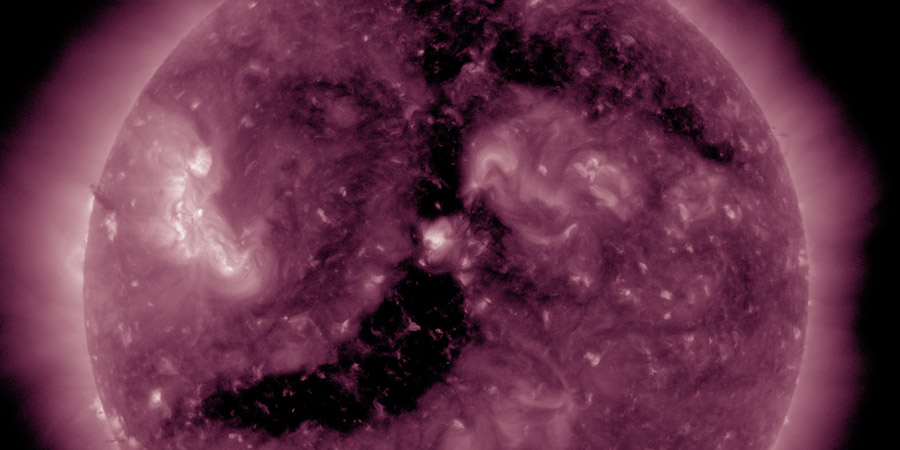Coronal hole faces Earth
Sunday, 15 January 2017 21:41 UTC

The northern hemisphere polar coronal hole with an extension all the way down to the solar equator is back and sending an enhanced stream of solar wind towards our planet.
A coronal hole is facing Earth. Enhanced solar wind could arrive in ~3 days - Follow live on https://t.co/T1Jkf6i4Cb pic.twitter.com/TlGcBQ2aJU
— SpaceWeatherLive (@_SpaceWeather_) 16 januari 2017
This coronal hole is a familiar solar feature that survived countless of solar rotations but if we compare the current coronal hole with how it looked like during the last rotation, we do have to conclude that it shrunk quite a bit. It managed to cause a moderate G2 geomagnetic storm during the last rotation but its doubtful that we will reach G2 storm conditions during this rotation.
We should start to feel the effects of this coronal hole solar wind stream at our planet in about 48 to 72 hours from now. Storming up to the minor G1 geomagnetic storm level is possible on 18 January (Wednesday) according to the NOAA SWPC who issued a storm watch for that date.
Thank you for reading this article! Did you have any trouble with the technical terms used in this article? Our help section is the place to be where you can find in-depth articles, a FAQ and a list with common abbreviations. Still puzzled? Just post on our forum where we will help you the best we can!
Latest news
Latest forum messages
Support SpaceWeatherLive.com!
A lot of people come to SpaceWeatherLive to follow the Sun's activity or if there is aurora to be seen, but with more traffic comes higher server costs. Consider a donation if you enjoy SpaceWeatherLive so we can keep the website online!

Space weather facts
| Last X-flare | 2025/01/04 | X1.85 |
| Last M-flare | 2025/01/22 | M1.3 |
| Last geomagnetic storm | 2025/01/04 | Kp5 (G1) |
| Spotless days | |
|---|---|
| Last spotless day | 2022/06/08 |
| Monthly mean Sunspot Number | |
|---|---|
| December 2024 | 154.5 +2 |
| January 2025 | 145.8 -8.7 |
| Last 30 days | 161.9 +43 |


